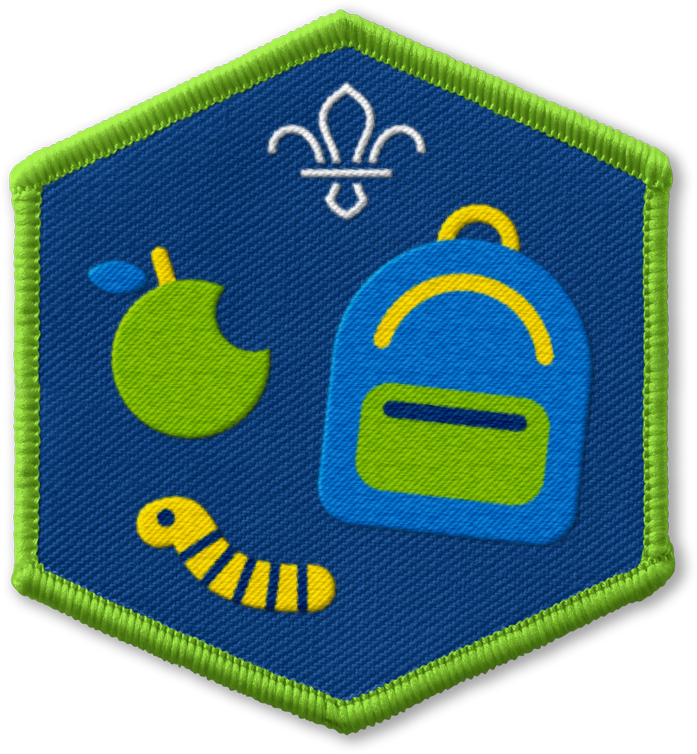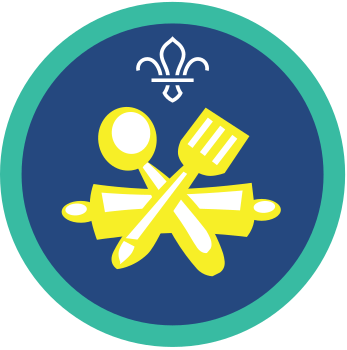
Cook campfire apples
You’ll need
- Tinfoil
- Spoons
- Mixing bowls
- Weighing scales
- A sharp knife (or apple corers)
- Tea towels
- Wire rack or heatproof surface
- Long heatproof tongs
- A timer
- Heat-resistant gloves
- Plates (optional)
- A metal bucket of water or sand to extinguish the fire
Before you begin
- Use the safety checklist to help you plan and risk assess your activity. Take a look at our guidance to help you carry out your risk assessment, including examples.
- Make sure all young people and adults involved in the activity know how to take part safely.
- Make sure you’ll have enough adult helpers. You may need some parents and carers to help if you’re short on helpers.
- Check for allergies, intolerances, fasting, food-related medical conditions, eating disorders, food sensitivities or dietary requirements, then adjust the food items used as needed. This may include making sure there’s no cross-contamination of packaging and no cross-contamination during the storage, preparation, cooking and serving.
- You may need to use separate chopping boards, equipment and utensils, such as tongs or toasters, for different dietary requirements, allergies and foods.
- If you’re unsure, check with the young person and their parents or carers. You can check with the adult directly if it’s a volunteer or helper.
- Some people may not like certain food textures or tastes and that’s OK. People don’t need to use all the ingredients if they don’t want to, and no-one should be made to try foods if they don’t want to. You can try to find an alternative for them.
- To make a campfire, everyone should get into groups. An adult should always be assigned to and supervising each group during this activity. Remember to give a safety briefing for building a campfire and methods you’re using. You may wish to demonstrate the methods or activity before you start. Before starting, make sure their hair is tied back, neckers and loose clothing tucked in, and any coats are zipped up. Each group should help to build and light one campfire, or each group could build and light their own campfire in a suitable, safe space. This’ll be depending on how many campfires you’ll want, need and can safely manage. Once a campfire or barbecue has been built and is lit, an adult should always supervise it. Our activities, Campfire admirers or Construct a campfire, can help you to do this.
- You’ll use the hot embers to cook on, so the fire will need enough time to die down before cooking. All the fires need to burn down to hot embers before they can start cooking. This decreases the chance of carbon monoxide being present and gives the best cooking heat. We have more guidance on different cooking methods.
- You could run our fire safety activities, Fuel air ignition and Sitting safely by a campfire, prior to running this session.
- Make sure that everyone’s fires have been built outdoors in clear, open areas, with plenty of ventilation, and away from any areas where people will be sleeping.
- Remember to have a hand washing station and take extra hygiene precautions when handling food. Look at our guidance on food preparation.
- Make sure you have all the ingredients ready.
- Once everyone has finished using the fire, don’t add any more wood. The fire will slowly begin to die down.
- Ask young people to step away from the fire while it’s put out.
- Using a stick, but not one that’s been in the fire, an adult should carefully spread out the wood and embers, so they cool down quickly. An adult should then slowly pour water over the smouldering wood and ashes to make sure they’re fully extinguished. Use the stick to mix the water through the ashes.
- Each group needs to wash up their utensils, then dispose of any rubbish. Any leftovers could be taken home to avoid waste.
Cook your campfire apples
Ingredients
- 1 Cooking Apple per person
- 3 Tbsp Sugar per person
- 3 Tbsp of Fruit per person (currants, raisins, dried cranberries or similar)
- Custard to serve with (optional)
Prep time: 15 minutes
Cook time: 20 minutes
- Gather everyone together in a circle. Explain that you’re going to make campfire apples.
- Remember to give a safety briefing for the cooking equipment and methods you’re using. You may wish to demonstrate the methods or activity before you all start cooking.
- Everyone should wash their hands, then ask everyone to get into groups. They should gather the equipment and ingredients they need. An adult should always be assigned to and supervising each group during this activity.
- Remember to give a safety briefing for the cooking equipment and methods you’re using. You may wish to demonstrate the methods or activity before you all start cooking.
Ready, steady, bake!
- Everyone should sit or stand at a clean surface, such as a table, with an apple.
- Place and carefully hold the apple on a stable cutting surface, such as a chopping board. Use an apple corer to carefully remove the apple core, watching your fingers and hands. To do this, carefully insert the apple corer near the stem, aiming toward the core. Apply a gentle pressure, then twist the corer to remove the core. Remove the apple corer, then pull out the apple core and any seeds. Place the apple to one side.
- Next, mix the sugar and fruit in a bowl.
- Wrap your cored apple in some foil, leaving a gap at the top to access the empty core hole.
- Carefully, fill the apple with the fruit and sugar mix. When it’s full, wrap the apple completely in the foil. You may wish to add an extra layer of foil.
Bake, cool and serve!
- When the apples are ready, an adult should use tongs and heat-resistant gloves to put the apples in the embers of the fire. Everyone should try to remember where their apple is – you could place them in alphabetical order.
- After 10 minutes, an adult should use the tongs and heat-resistant gloves to turn the apples over, so both sides cook evenly.
- While the apples are cooking, an adult should always supervise them. Everyone could help clean up or play a game, such as Fruit salad.
- Once the apples are cooked, an adult should use the tongs and heat-resistant gloves to remove them and place them on a heatproof tray, such as a baking tray.
- They should leave it for a few minutes to cool down on a heatproof, stable surface, out of reach of young people.
- When cooled, enjoy eating the apples! Why not try them with ice cream, cream or custard?
Reflection
This activity was a great introduction to the fun of outdoors cooking! What was everyone’s favourite bit of cooking and eating outside? Can anyone think of any other utensils they use in their kitchen and a ‘backwoods’ outdoor cooking alternative?
This activity also needed everyone to practice different skills to the ones they usually use when cooking indoors. What do people do after they eat a meal they’ve cooked inside, for example after dinner at home?
What do people do when they’ve finished with an oven? They turn it off. How is a fire different? People can’t just turn it off – they need to put it out and make sure it's left safely.
Safety
All activities must be safely managed. You must complete a thorough risk assessment and take appropriate steps to reduce risk. Use the safety checklist to help you plan and risk assess your activity. Always get approval for the activity, and have suitable supervision and an InTouch process.
- Outdoor activities
You must have permission to use the location. Always check the weather forecast, and inform parents and carers of any change in venue.
- Food
Remember to check for allergies, eating problems, fasting or dietary requirements and adjust the recipe as needed. Make sure you’ve suitable areas for storing and preparing food and avoid cross contamination of different foods. Take a look at our guidance on food safety and hygiene.
- Sharp objects
Teach young people how to use sharp objects safely. Supervise them appropriately throughout. Store all sharp objects securely, out of the reach of young people.
- Hot items and hot water
Kettles, cookers and microwave ovens produce a lot of heat by the very nature of them. Caution is needed when in contact with items that have been heated and young people should use them under adult supervision. Use on a suitable surface, protecting it if necessary. Never leave hot items unattended and make sure there’s a nearby first aid kit, with items to treat burns/scalds.
- Fires and stoves
Make sure anyone using fires and stoves is doing so safely. Check that the equipment and area are suitable and have plenty of ventilation. Follow the gas safety guidance. Have a safe way to extinguish the fire in an emergency.
- Cooking
Teach young people how to use cooking equipment safely. Supervise them appropriately throughout. Make sure it’s safe to use and follow manufacturers’ guidelines for use.
To make this activity easier, you could core all the apples before the activity begins
- There’s lots of loud noises, sitting and different smells when eating, which may overwhelm some people. People may choose to wear ear defenders while eating, move around while eating or sit in a separate space to everyone and that’s OK.
- Be conscious about who may be fasting when providing snacks, eating and drinking – you may want to plan this activity for when everyone can get involved or leave out the eating and drinking part.
- People could work in pairs or with a young leader to prepare their apples and add the mixture to make sure everyone's supported in this task.
- You can serve the apples in bowls after cooking to make eating easier for Scouts and less messy
All Scout activities should be inclusive and accessible.
Why not try some of our other campfire recipes?
Young people could choose their own fillings - it doesn’t have to be fruit!




